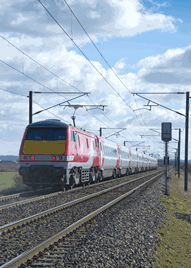 Read the peer reviews for this feature.
Read the peer reviews for this feature.
Download the graphs for this feature.
It seems we may be entering a period of possible tectonic change in the passenger rail industry. The Competition and Markets Authority’s recent discussion document for consultation, Competition in passenger rail services in Great Britain, set against the backdrop of the commissioning in the summer of the Shaw Report and the Hendy Review, signals potential evolution in the economic, commercial and regulatory model underpinning the railway industry.
The CMA’s focus on greater ‘on-track’ competition, and the impact that may have on the network, raises some interesting tensions and dilemmas - not least of which is the role that ‘on track’ competition should play going forward.
There are two limbs to this. Firstly, proponents of increased ‘on track’ competition argue that it would lead to lower prices, better services and more innovation in passenger rail services. Secondly, they also argue that ‘on track’ competition would place positive pressure on Network Rail to improve its service offering, and help it to achieve better performance across its network management and growth responsibilities.
This latter point is particularly relevant, given the major public investment in rail to increase capacity on the constrained networks, in order to meet demand and allow for growth - ERTMS, line upgrades, HS2 and new rolling stock such as IEP trains.
This investment needs to be supported by business cases and economic analysis on a case-by-case basis. But there is also the wider economy to consider, particularly the ‘Northern Powerhouse’ concept, which depends on improving the rail network in general, not just the most profitable routes into and out of London.
This leads to concerns from those who are more sceptical of the benefits of competition. They make the point that while the economic theory of enhanced competition may be good for some routes, other routes - particularly those that are unprofitable but socially valuable - would suffer in practice, and that this would have a long-term negative impact on railways overall.
In particular, a focus on simply driving down fares and promoting free competition may harm investment, and prevent the delivery of the required network benefits that are necessary to sustain the rail industry and capitalise on the progress made to date.
The current question is: which (if any) of the alternatives to the current market design would preserve and enhance the significant improvements made to rail passenger services over the past 20 years, and which would harm their future development?
Part of the complexity of the market is that there are different perspectives within Government. The CMA’s document reminds us that one of the roles it is sworn to deliver is to challenge Government where Government is creating barriers to competition. It is in this capacity that this consultation document has been produced, on the back of concerns that competition in the railway sector (as with other regulated sectors) could be delivering more for taxpayers and the economy.
This brings the CMA into contact with the Office of Rail and Road and Department for Transport, and their different perspectives on the rail market that have evolved in conjunction over time and while experiencing massive growth in rail passenger journeys and rail passenger satisfaction scores since privatisation - mostly achieved through ‘off track’ (franchise) competition.
One might therefore question why the CMA feels the need to get involved at all, given this record of achievements. However, it is clear that the rail network itself remains significantly challenged in delivering the necessary infrastructure for the railway network to flourish (note the Shaw and Hendy reviews referred to above). And there are arguments that where open access operators (OAOs) have been running services it has led to significant improvements for passengers - not just on their services, but also on the competing franchise services, which have been forced to keep up.
While actual changes may be some years away (with the CMA talking about 2023 onwards), the policy views that will shape those changes seem to be starting to come into focus now. In this period of consideration, it will be important for all stakeholders to consider the effects of changes carefully, to ensure that any changes made are for the benefit of the consumers, taxpayers and the economy in general and do not result in negative unintended consequences.
DfT: Political objectives
The role of central Government has developed over time. At privatisation, the original intention expressed in the 1992 White Paper was for franchises to be designed wherever possible to provide scope for competition between franchise operators. This included the intention that ‘on track’ competition would be moderated, but only to a limited extent and only for a transitional period.
The arrival of a Labour government in 1997 and the creation of the Strategic Rail Authority meant that from 2002 new franchises were specified much more closely, with much more tightly specified timetables.
There was also a priority to have a single operator for each London terminus, as it was believed that this would assist with network capacity usage. This can be seen as the focus shifting from competition where feasible to one where the priority was the delivery of socially desirable services cross-subsidised by more profitable routes to alleviate the burden on the taxpayer.
Since then, and following the problems with the West Coast franchise, the Brown Review recommended a number of changes take place. These have been broadly accepted by the DfT, but it remains to be seen how all of these will translate into general franchising practice.
ORR: Multiple objectives
The ORR finds itself (as do many sector regulators) in a slightly difficult position between regulated service delivery at the network and franchise level on the one hand, and competition on the other hand.
As the economic and safety regulator for the railways it must consider and achieve an appropriate balance between its 24 different statutory objectives (contrast, for example, Ofwat’s five primary statutory duties). While one of these duties is the promotion of competition for the benefit of users of railway services, another is factoring in the funds available to the Secretary of State for the purposes of his functions in relation to railways or railway services. When it comes to open access operators, these clearly have the potential to pull in different directions (see Panel 1).
There is also something of a contrast between ORR’s role as the regulator of Network Rail on the one hand, and on the other hand as decision-maker regarding open access operations. One of these roles is about maintaining a regulated monopoly and having it operate to specified standards within specified funding constraints. The other may be characterised as assessing whether potentially dynamic and innovative competition from non-traditional downstream service providers is likely to be beneficial to the network.
This may (to some degree) account for the way in which ORR applies the ‘not primarily abstractive’ test in relation to open access applications. Some raise criticisms that the methodology used in applying the test is outdated and does not take account of up-to-date economic information (particularly the growth of passengers on the East Coast Main Line), and may have some inherent inbuilt weights in favour of franchise operators over open access applicants.
It is interesting that despite being a concurrent regulator under the Competition Act 1998 in relation to railways, the ORR has brought no cases in relation to passenger rail services. Contrast this to the market for freight railway services, where the ORR has successfully brought a number of cases. This emphasises the low level of competition currently taking place on passenger rail services.
CMA discussion document
The CMA, while being alive to the other issues, has a much simpler perspective. Its relevant statutory duty is to promote competition for the benefit of consumers.
The CMA is particularly looking at:
- Securing better value for money for passengers (lower fares) and taxpayers (efficiencies leading to lower operating costs).
- Enhancing service quality and encouraging innovation.
- Unlocking network efficiencies, potentially by focusing on Network Rail’s incentives for capacity utilisation and cost controls.
However, the CMA recognises that changes should:
- Not disrupt current and forthcoming rounds of franchising.
- Maintain the provision of socially valuable services which may not be commercially viable.
- Not jeopardise current and future network investment.
- Not have any adverse operational impact.
The CMA’s discussion document raises concerns about the effectiveness of franchise competition in the rail industry context. From a pure economics perspective, the franchise competitions run by DfT meet only two of the four relevant conditions to be perfectly efficient. In particular, competition does not begin afresh for each new contract and customer, and entry is not ‘easy’ given that the franchise application process is expensive and time-consuming.
The CMA’s thesis is that examples from the rail freight sector, open access operators, overlapping franchises and Europe indicate that greater on-rail competition in Great Britain could generate benefits in terms of innovation, service quality improvements and lower prices.
While the CMA appreciates that the examples it refers to are not precise analogies, it believes that taken together they are “richly suggestive” that significant benefits could be gained from introducing greater on-rail competition alongside competition for the market in terms of franchises.
It also identifies various increases in available capacity on the network that it expects over the coming years (due to the introduction of new technology), which it believes will provide additional space on the network for new entrants.
One of the key arguments against additional open access operations has been the belief that they will reduce the funds available to the Government from rail franchising.
Some would argue that the economic evidence from other industries and from the East Coast Main Line would show this has not been the case. In particular, revenues on the ECML have increased considerably during the period that Grand Central and Hull Trains have been operating in competition with the East Coast franchise, noting the massive premium growth in percentage terms since 2008.
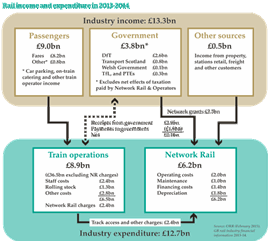 Proponents of open access would argue that these operators have grown the market for rail passenger travel as a result of the additional services they have provided and the destinations they have served, and that these growth effects have substantially outweighed any detriment to the franchise operation and the cross-subsidies available to unprofitable services. However, others would query whether this evidence is really conclusive, and in particular whether this growth would have occurred in the absence of open access in any event, given prevailing economic conditions.
Proponents of open access would argue that these operators have grown the market for rail passenger travel as a result of the additional services they have provided and the destinations they have served, and that these growth effects have substantially outweighed any detriment to the franchise operation and the cross-subsidies available to unprofitable services. However, others would query whether this evidence is really conclusive, and in particular whether this growth would have occurred in the absence of open access in any event, given prevailing economic conditions.
An argument often used against the current open acess operations is an assertion that they do not pay a ‘fair’ contribution towards track maintenance costs, given that they only pay the Variable Track Access Charge and not the Fixed Track Access Charge payable by franchisees. While the High Court did not see this as an issue in 2006 (and there are contra-arguments), the CMA has picked up this proposition - all of its options that include open access operations also include revised track access charge proposals.
Four options for change
The options put forward should all be considered against the backdrop of the current system as the base case scenario. Interestingly two of the options for change rule out open access competition where they would apply (Options 2 and 3), while the other two options for change envisage a significant expansion in the role of open access operations. The options therefore cover a range of different approaches, even though they all fundamentally share the goal of achieving ‘on track’ competition for routes that are profitable.
Clearly, there are also a number of variants possible on these four options. One variation of Option 4 that has been added to the mix by one stakeholder group is that the licensing should apply only to profitable inter-city services, and that regional and commuter services should continue to be operated on a franchise basis as presently.
The two tricky parts for each of the four options are: how to fund and maintain socially desirable but in themselves unprofitable services; and how to manage track access given the practicalities of limited capacity.
The CMA also believes that reducing the level of specification in some franchise agreements would allow franchisees to tailor their services to passenger demand better, and to be more responsive. This would also be important alongside any of the options that the CMA is considering recommending.
Fundamentally, the system of track access charges is due for reform if any of these options is going to work. The ORR’s ongoing work in this area will be crucial to the success of any changes made to the competition framework for the industry.
Similarly, the ORR’s review of Network Rail’s role as system operator will also be important. The introduction of downstream competition has arguably had a positive impact on the efficiency of network infrastructure in other industries, such as aviation and water in Scotland (although some of the evidence behind this is debatable). The ORR’s review will need to consider whether the same benefits may be available in relation to the operation of Network Rail, and if so, how those benefits might be realised.
Finally, smart ticketing has a significant role to play. The ability to gather data about the actual trains that passengers catch would allow revenue to be allocated more precisely between operators than the current estimations made under the ORCATS model. This would sharpen the incentives for competition if every passenger and every seat counted towards total revenue for TOCs and OAOs.
The challenge for the rail industry, government and the regulator is to come up with a system for now, and moving to 2023 and beyond, that includes the right balance between all these different aspects to generate the best outcome for rail customers and the taxpayer generally.
The CMA’s discussion document has highlighted the complexity of the provision of passenger rail services in Great Britain, and the number of different considerations that policy makers need to take into account and balance when designing policies for the sector, particularly in the run-up to the next round of franchising from 2023.
There are clearly a wide number of options. There is also the possibility that there is no ‘one size fits all’ solution - different options might be more appropriate in different parts of the country that have different economic and social conditions.
The challenge is to set a course for the next 20 years and beyond that will allow the nation to get the most from both the massive investment in rail that is currently under way and the ‘renaissance’ of the past 20 years. This will allow governments to continue to invest, and for franchisees and open access operators to be able to plan their businesses with the right degree of certainty.
Only in this way will the economic network benefits be delivered, avoiding the risk of a short-term scramble to offer low-priced competitive services that crowd out the important areas where improvements are really required in the long term, while still allowing for competition to play its undoubtedly useful part in driving progress and preventing monopoly abuses.
The key will be for policy makers to understand the issues in sufficient detail to select the right mix of competition and specification going forward, to balance competition ‘for’ the market and competition ‘in’ the market, and to ensure that there are no unintended practical consequences from making decisions based too heavily on economic theory and not sufficiently grounded in practical reality.
Read the peer reviews for this feature.
Download the graphs for this feature.
 Peer review: Paul Plummer
Peer review: Paul Plummer
Chief Executive, Rail Delivery Group
Britain’s railway plays a crucial role in people’s daily lives and the wider economy, so it is important that the industry continues to think about how best to harness the best aspects of competition to deliver even better services.
The Competition and Markets Authority’s focus on greater ‘on-track’ competition highlights a number of issues. Each needs to be considered as to whether the customer - the passenger or freight user - benefits from a different type of competition. It is best summed up by the two-pronged question: which alternatives to the current market design would preserve and enhance the significant improvements made to rail passenger services over the past 20 years, and which would harm their future development?
Since 1997, passenger numbers have more than doubled to 1.6 billion. Over the same period, the railway has gone from running at a £2 billion a year loss in terms of its day-to-day costs to today covering its running expenses. This means government support can instead focus on building a bigger, better railway for passengers.
The CMA’s report recognises the value delivered by the partnership between the public and private sectors in rail. The industry has also been successful in balancing the different uses of the railway and the distinct needs of different sectors, such as commercial, public service obligations and freight.
The CMA also suggests alternative ways of structuring that successful formula. Alongside central and devolved governments and the regulator, the discussion around the formula is one in which the rail industry is actively engaged. Its review of competition in the market for rail travel should therefore consider rail’s wider benefits to local communities, the economy and the environment. While on some routes there is competition between train companies, under the franchising system operators usually compete for the whole market for rail travel on a particular route.
The CMA’s work suggests four options to use competition to improve services by increasing the number of passengers who have a choice of operators when making their journey. The RDG response to the consultation said that the CMA should test each of them against how effectively they deliver service quality and capacity for passengers and freight. Each option also needs to promote efficiency and safety, and deliver those wider benefits. And how might they be practically implemented?
The RDG’s view is that the CMA should also take into account a number of potentially significant industry reviews that have been taking place recently, among them those of Network Rail Chairman Sir Peter Hendy on the enhancements programme, Dame Colette Bowe on how future investment programmes can be implemented better, and Nicola Shaw on the future structure of NR.
We would also suggest that the CMA considers other options in addition to those it has put forward, in order to allow the rail market to respond more flexibly to passenger needs. These include changing franchise contracts and improving the access process and charging structure between Network Rail and train operators.
If changes are made to the structure of Britain’s railway, the purpose of the changes needs to be clear and introduced in a consistent way. Not every aspect of the current system is straightforward, sometimes because the railway’s objectives aren’t clear or are ‘out of sync’ with one another.
 Peer review: Richard McClean
Peer review: Richard McClean
Managing Director, Grand Central
One of the highlights of the progress that the UK’s rail
industry has delivered over the past 20 years has been the extraordinary success of the passenger sector - outstripping the performance of comparable operations across Europe and in defiance of perceived wisdom and the general economic cycle. As a result, costs to taxpayers have reduced, fares paid by passengers have been essentially static, and rail is now seen by policymakers as an enabler of social and
economic growth.
This is all in complete contrast with what was expected to happen when the current industry structure was established, where the thinking was all about managed decline and protection for the fledgling franchises. Primarily as the result of growth, we have the position today where significant elements of the passenger rail sector are essentially commercially viable in their own right – a situation simply not envisaged at privatisation.
While this progress has been made through the current industry arrangements, it is clearly a good time to take stock and consider whether development of these arrangements could enable further, continued and accelerated progress.
If the underpinning factor that has driven the passenger sector’s success has been growth, it is worth looking at the role that on-rail competition has had in driving this. It is clear that the existing small-scale, niche open access operators have, at their own commercial risk, successfully opened up new markets in communities that have been neglected by the centrally planned franchise operations - bringing new traffic to rail. The evidence also shows that at the few locations where these open access services directly interact with the franchised services, growth has been higher than where there is no choice offered to passengers. The same is true at locations where franchised operations overlap.
The current policy for UK on-rail competition is not coherent with other elements of the industry structure. Therefore, where on-rail competition exists or proposals are floated to increase its scope, increasing levels of tension are created - tensions that do nothing positive for passengers, operators or taxpayers. Addressing this, and thus unlocking the potential for acceleration in the benefits that increased on-rail competition can deliver, will require a considered approach. This needs to:
- Focus on the markets where passenger choice is most real - the long-distance, high-speed, inter-city markets - by ending the current policy of renting timebound monopolies through the franchising of these operations, and allowing the emergence of strong long-term operators to compete in these markets.
- Ensure the best value delivery of non-commercial necessary public service operations - the commuter and regional services - by enhancing the current process of competition for the market.
- Establish mechanisms that allow the commercial operators to support the public service operations to replace the current money-go-round of franchise premium payments from some operations balancing franchise subsidies paid to others – careful use of well-structured access charging and access levies would enable this.

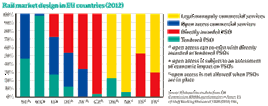
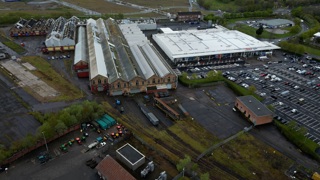
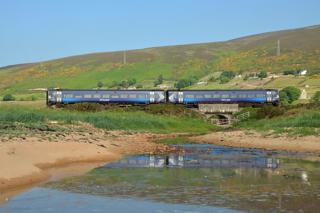
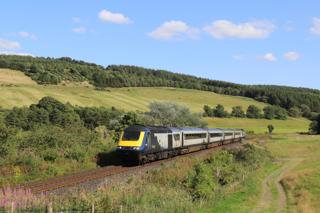
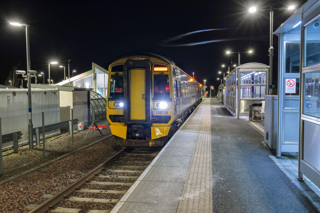
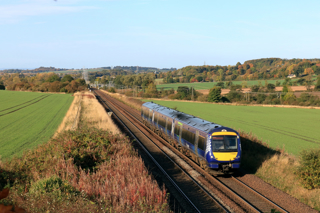




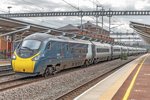







Login to comment
Comments
No comments have been made yet.